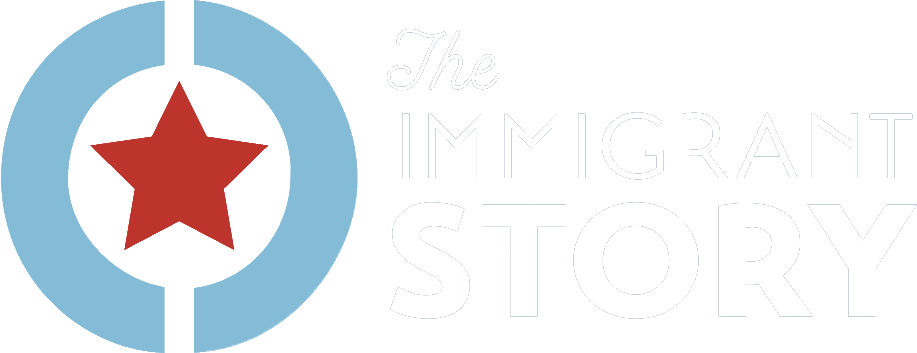From early childhood, says Oxana Ake, “I wanted to create things.” Her father, an engineer, taught her how to make boats from wooden sticks, twigs and boards,
“and I liked the feeling of doing that. Now I like to create fabrics with textures too.”
Ake was born in Samarkand, Uzbekistan (formerly the Soviet Union), in 1970. Samarkand is nearly 3000 years old, and was a main stop on the Silk Road between China and Europe. Many communities in the area grew silkworms and the streets of Samarkand are still lined with mulberry trees used to feed silkworms.
Ake’s family has both German and Russian roots. “During World War II, my grandmother lived in a German village near St. Petersburg, Russia,” she explains. Stalin was worried about having Germans in the area so, one night, he shipped the entire German village to Siberia. My grandmother was in that train and jumped off when they came to the Baltic area. My grandfather was returning home from fighting in the war and that was where they met and married. ”
Ake remembers both the positive and the negative aspects of growing up in the Soviet Union. The good part: she did gymnastics and piano. There were unlimited opportunities for kids.”
But even as a child, she noticed corruption in the Soviet Union. For instance, she notes, if your relatives had power, you were able to attend a university or get a better job position than others.
Every day after school, Ake went to gymnastics practice for two hours. When she was seven, representatives from the ballet academy in Moscow visited and chose her to become a ballerina. “But my mother said no because I was too young to live away from my family and do the training,” she remembers.
She had two more chances to pursue a ballet career, but her mother continued to object. “My mom came to the college,” she remembers, and her mother asked the choreographer, ‘‘What is important to a ballerina: legs or brain?’ Of course, the choreographer said ‘legs’ so my mother said no.”
Her mother and her culture told her that she must choose a comfortable and practical career for her family. Ake went to the university in Samarkand to study education and became a teacher. While in university, Ake met a man named Alexander Belousov. Ake was 20 when they married.
When the Soviet Union collapsed, Uzbekistan became dangerous and in 1992, Ake and her husband moved to Russia, where their son was born a year later. Ake worked at a school while Alexander worked in construction.
After four years of struggling to adapt to life in Russia, they moved back to Uzbekistan in 1997. But they found Uzbekistan had changed. The culture had shifted and become unwelcoming as ethnic-based discrimination and violence increased. A year later, some parents in Russia offered Ake a position tutoring children and they returned to Russia.
In 2002, Ake obtained Russian citizenship. She and her husband opened a textile arts business, selling mainly accessories at first. She traveled to Turkey, Dubai, and China to share her art and promote their business. Eventually, they bought an apartment in Krasnodar, the nearest big city, so their son, also named Alexander Belousov, could study there.
The young Alexander was a talented athlete, and at 16, he was offered a spot on Dynamo, the Russian soccer team. Ake still remembered how her mother had blocked her hopes of becoming a a ballerina, so she let her son travel to Moscow to play.
“He went to Moscow to play soccer and he broke his knee very badly during a game,” Ake says. “He was with my husband in Moscow and I was in the nearby Black Sea area managing the store. I talked to my husband and explained that I had enough merchandise to continue to sell in that town and had automated it enough so that I could open another store in Moscow to be closer to my son.”
She opened the second store in Moscow and lived with their son in Moscow while her husband returned to the first store.The couple divorced in 2010. After three surgeries, her son was told to give up soccer and went to school to study finance.
In 2016, Ake came to the United States on a short vacation to visit her cousin. One of the cities on her U.S.itinerary was Portland. Before she arrived, her cousin put her in touch with a friend named Brad who agreed to show her around Portland. The visit was not stress-free, for while they were at a McDonalds, Ake lost her bag with all of her belongings, including her passport. Luckily, she got her papers back the next day.
After sharing that emotional experience of losing and then finding her very identity so quickly, Ake and Brad fell in love. She remained in Portland and a few months later, they got married.
In 2020, Ake began to sell some of her artistry online and started to make couture designs. In 2023, she showed her designs at a runway show by FashioNXT as an emerging designer. She has since shown her clothes in New York, Los Angeles, and Paris. Word of her talents spread quickly, and now she makes only custom orders made of fabric that she creates herself in her atelier in Tigard.
Soon after she arrived in the U.S., Ake enrolled in an ESL class. “We had to write about our dream life in the United States,” she says. “I wrote the story but I forgot about it. Then, after my show at FashioNXT, I happened to look back at what I had written and was shocked. I wrote, ‘I will be a fashion designer. I will showcase my collection in Portland and New York.’ How was it possible that my dream came true?”

